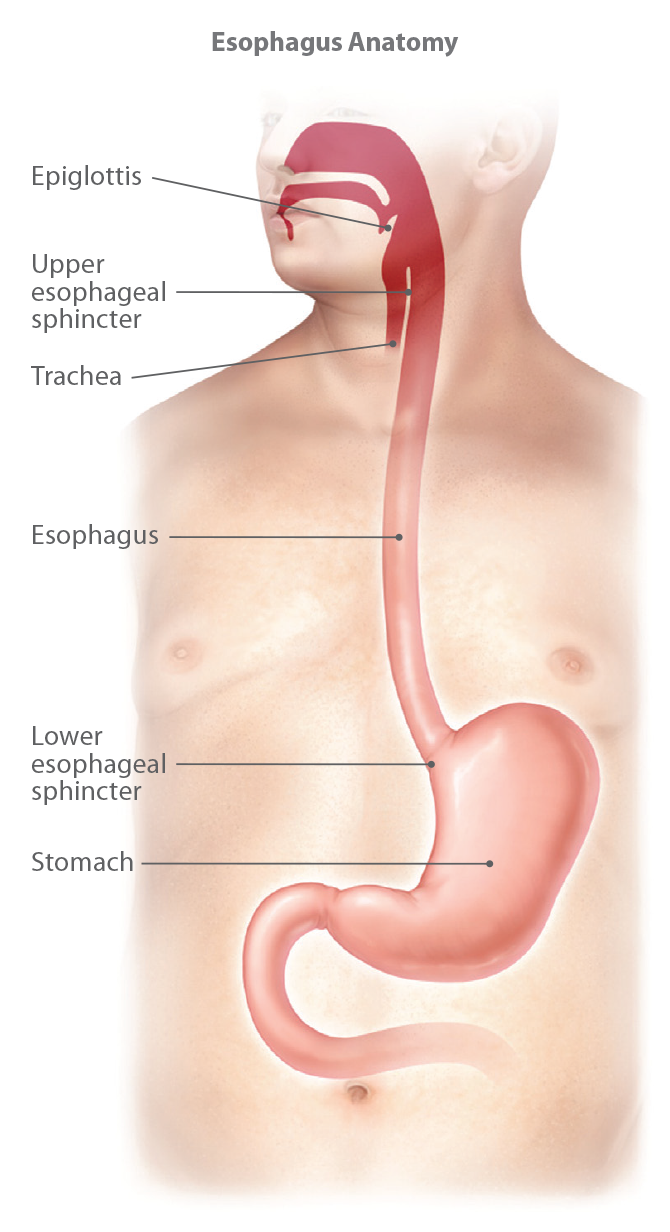Understanding esophageal cancer
Esophageal cancer occurs when the tissue that lines the esophagus becomes malignant. The esophagus is the tube that connects the throat to the stomach, allowing food to pass.
Adenocarcinoma is the most common type of esophageal cancer. This type of cancer forms in glandular cells in the lining of the esophagus that release mucus. It typically develops in the lower part of the esophagus, closer to the stomach.
Squamous cell carcinoma develops in the flat cells that line the esophagus. This type of esophageal cancer is typically found in the upper and middle parts of the esophagus.
The TNM system
The stage of esophageal cancer is one of the most important factors in evaluating your treatment options.
Stages of esophageal cancer are assigned based on the American Joint Committee on Cancer's (AJCC) TNM system, a commonly accepted method based on three key components:
Tumor (T) describes the size of the original tumor. describes the size of the original tumor.
Node (N) indicates whether the cancer is present in the lymph nodes. indicates whether the cancer is present in the lymph nodes.
Metastasis (M) refers to whether cancer has spread to other parts of the body. refers to whether cancer has spread to other parts of the body.
A number (0–4) or the letter X is assigned to each factor. In esophageal cancer staging, as in all cancer staging, a higher number indicates increasing severity. For instance, a T1 score indicates a smaller tumor than a T2 score. The letter X means the information could not be assessed.
Once the T, N and M scores have been determined, an overall stage is assigned.
Stages of esophageal cancer
Stage 1
The tumor is small (7 cm or less across) and limited to the esophagus.
Stage 2
The cancer has grown larger but still remains within the esophagus. In this stage of the disease, there is no evidence of spread to lymph nodes or distant sites.
Stage 3
The cancer has grown beyond the esophagus and may now extend into nearby tissues or organs. The cancer may or may not have spread to nearby lymph nodes.
Stage 4
The cancer may be any size and has grown beyond the esophagus. In this stage of esophageal cancer, the disease may have spread to lymph nodes or distant sites like the liver or abdominal cavity.

